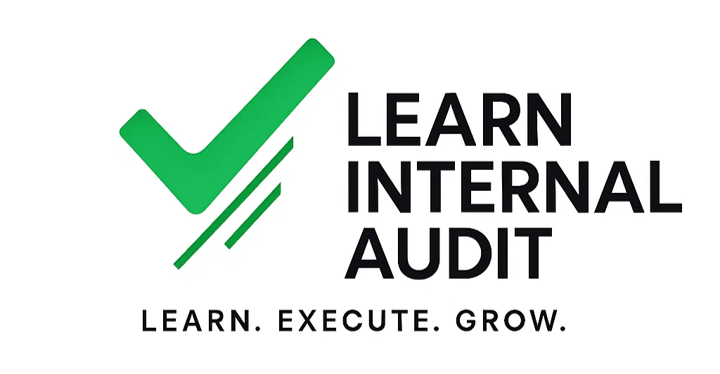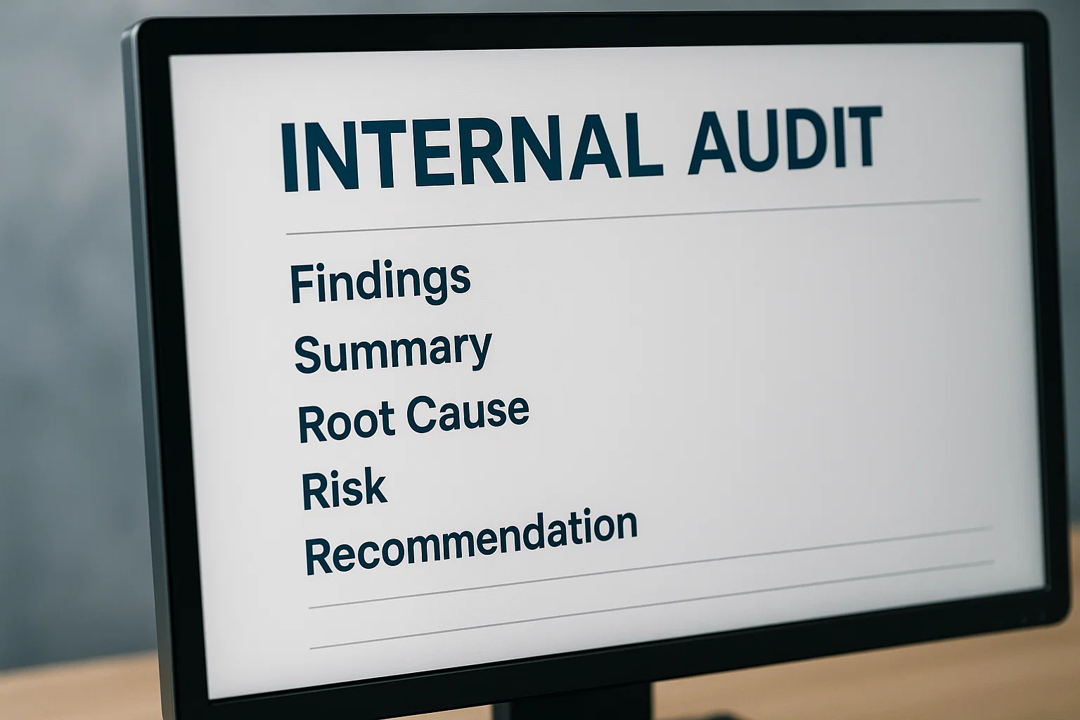An internal audit report is not just a document — it’s a communication tool that translates technical findings into business-relevant insights. For an internal audit report to be effective, it must not only reflect the results of the engagement but also align with the information needs of diverse stakeholders, including process owners, senior management, and the board.
This article outlines the key components of a well-crafted internal audit report, drawing from professional standards and practical experience.
Understanding the Audience
Every audit report should be tailored to its audience. Key questions to consider before drafting include:
- Who are the most important readers?
- How familiar are they with the audited activity?
- How will they use the report?
- What impact do the identified issues have on them?
Answering these questions helps determine the tone, detail level, and structure of the report — whether a full version or a customized executive summary is more appropriate.
Professional Standards for Audit Reporting
According to IIA Standard 2420 – Quality of Communications, audit reports must be:
- Accurate
- Objective
- Clear
- Concise
- Constructive
- Complete
- Timely
The structure and style often vary by organization, guided by internal communication templates and preferences of senior management or the audit committee. However, the foundational elements remain consistent.
Typical Components of an Internal Audit Report
Here is a standard breakdown of what a professional internal audit report typically includes:
1. Report Title
A clear and direct title indicating the audit subject.
2. Executive Summary
A one-page high-level summary of the audit. It should:
- Avoid technical jargon
- Summarize scope, objectives, and key results
- Highlight strengths and good practices
- Identify critical observations and unresolved concerns
- Include recurring issues or open action plans from past audits
3. Introduction and Scope
States the engagement’s purpose, coverage, and limitations. As per IIA Standard 2410, reports must clearly communicate the audit’s objectives, scope, and results.
4. Background
Provides context about the audited entity or process — such as size, complexity, and key operational features.
5. Recognition and Positive Observations
Acknowledges good practices, control improvements, or cooperation by auditees.
6. Engagement Rating or Outcome
Summarizes the overall result using a rating scale (e.g., Satisfactory / Needs Improvement / Unsatisfactory).
7. Conclusions
Presents final judgments about risk exposure and control effectiveness. Should clarify overall impact — operational, financial, or reputational.
8. Observations and Findings
This is the heart of the report. Each finding should include:
- Title and Reference
- Criticality Rating (e.g., high, medium, low)
- The 5 Cs of Observations:
- Condition – What was found (the facts)
- Criteria – What should exist (standards, policies, expectations)
- Cause – Why the deviation occurred (root cause)
- Effect – The impact of the deviation (actual or potential)
- Conclusion/Rating – Significance and prioritization of the issue
Findings should be organized by significance or theme, supported by evidence such as tables, charts, or metrics where applicable.
9. Recommendations
Recommendations should offer practical, actionable steps. They can be:
- Condition-based – Focused on correcting the issue
- Cause-based – Focused on preventing recurrence by addressing the root cause
Good recommendations balance feasibility with effectiveness.
10. Management Action Plans
Developed in collaboration with process owners, action plans should include:
- Agreed corrective action
- Responsible individual or team
- Target completion date
These plans reflect management’s ownership and commitment to remediate.
11. Distribution List
Define who will receive the report. This includes the process owner, function heads, senior management, and possibly the board or external auditors. Final decisions on dissemination lie with the Chief Audit Executive (CAE).
Writing Style and Presentation
An audit report is only as useful as it is readable. Keep the following in mind:
- Use simple language and avoid technical jargon
- Be direct — avoid vague language or excessive disclaimers
- Use visuals like charts or process maps to present complex findings
- Highlight key messages with clear section titles
- Ensure consistency in terminology, formatting, and rating systems
- Use color-coding or risk icons to emphasize priority
The tone should remain professional and constructive, focusing on improvement rather than fault-finding.
Tips for Clarity and Impact
- Prioritize clarity over complexity
- Consider different formats for different readers (e.g., summary for leadership)
- Include a glossary for technical terms if needed
- Differentiate observations made by management from those made by the auditor
- Provide risk ratings consistently and use standardized scales
Conclusion: What Makes a Report Truly Effective
Ultimately, the success of an internal audit report is not in how much it says, but in how clearly it informs and prompts action. A well-structured report:
- Communicates results with clarity
- Prioritizes based on risk
- Encourages management response and accountability
- Supports decision-making at all levels
An effective report delivers value by being direct, precise, concise, and most importantly, useful to its audience.
Explore more such useful insights on Internal Audit performance.

